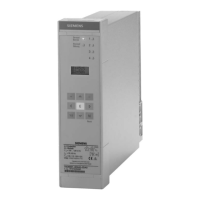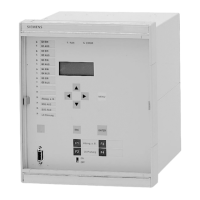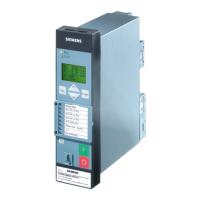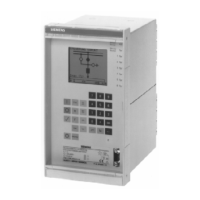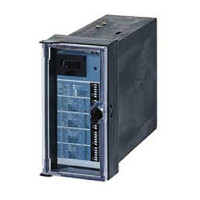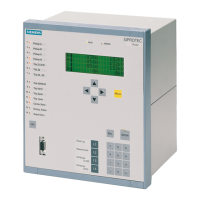Functions
2.6 Circuit-Breaker Failure Protection 50BF
SIPROTEC, 7SD80, Manual
E50417-G1140-C474-A1, Release date 09.2011
105
Figure 2-38 Circuit-breaker failure protection with common phase initiation
Time Delays
When the initiate conditions are fulfilled, the associated timers are started. The circuit-breaker pole(s) must
open before the associated time has elapsed.
Time delays can be set for 3-pole initiation and for two-element protection.
With single-element breaker failure protection, the trip command is relayed to the adjacent circuit breakers
which interrupt the fault current if the local feeder breaker fails (see Figure 2-34 and Figure 2-35). The adjacent
circuit breakers are those located at the busbar or busbar section to which the feeder under consideration is
connected. The possible initiation conditions for the breaker failure protection are those discussed above. De-
pending on the application of the feeder protection, common phase or phase-segregated initiation conditions
may occur. Tripping by the breaker failure protection is always 3-pole.
T2 is used as time delay.
With two-element breaker failure protection
, the trip command of the feeder protection is usually repeated, after
a first time element, to the feeder circuit breaker, often via a second trip coil or set of trip coils, if the breaker
has not responded to the original trip command. A second time element monitors the response to this repeated
trip command and trips the breakers of the relevant bus-bar section, if the fault has not yet been cleared after
this second time.
The time delay T2 is started after the T1 timer has expired if address 3913 T2StartCriteria = With exp.
of T1.
If address 3913 T2StartCriteria = Parallel withT1, T1 and T2 are started simultaneously. The T2
timer can be started by a separate binary input 1424„>50BFSTRTonlyT2“.

